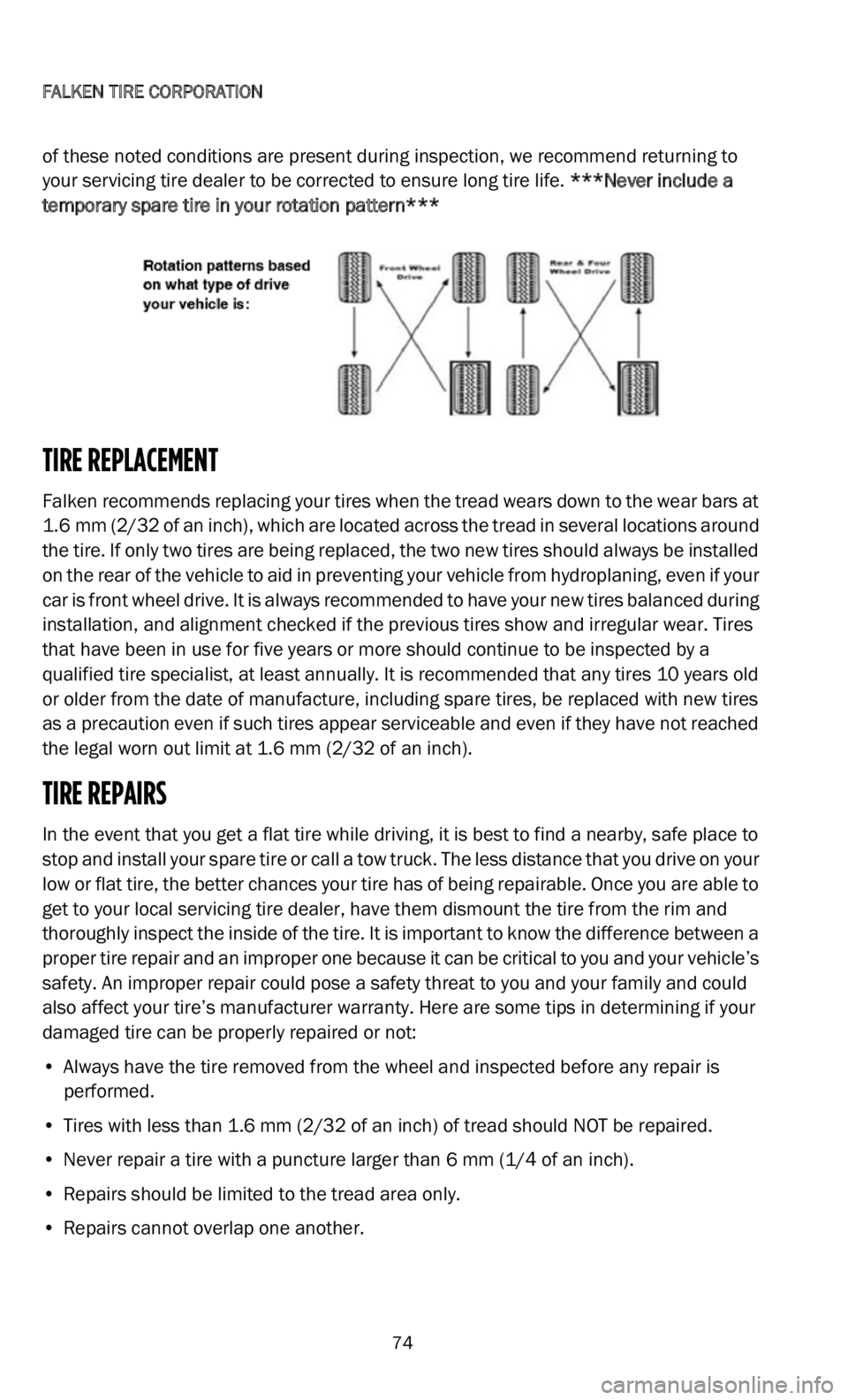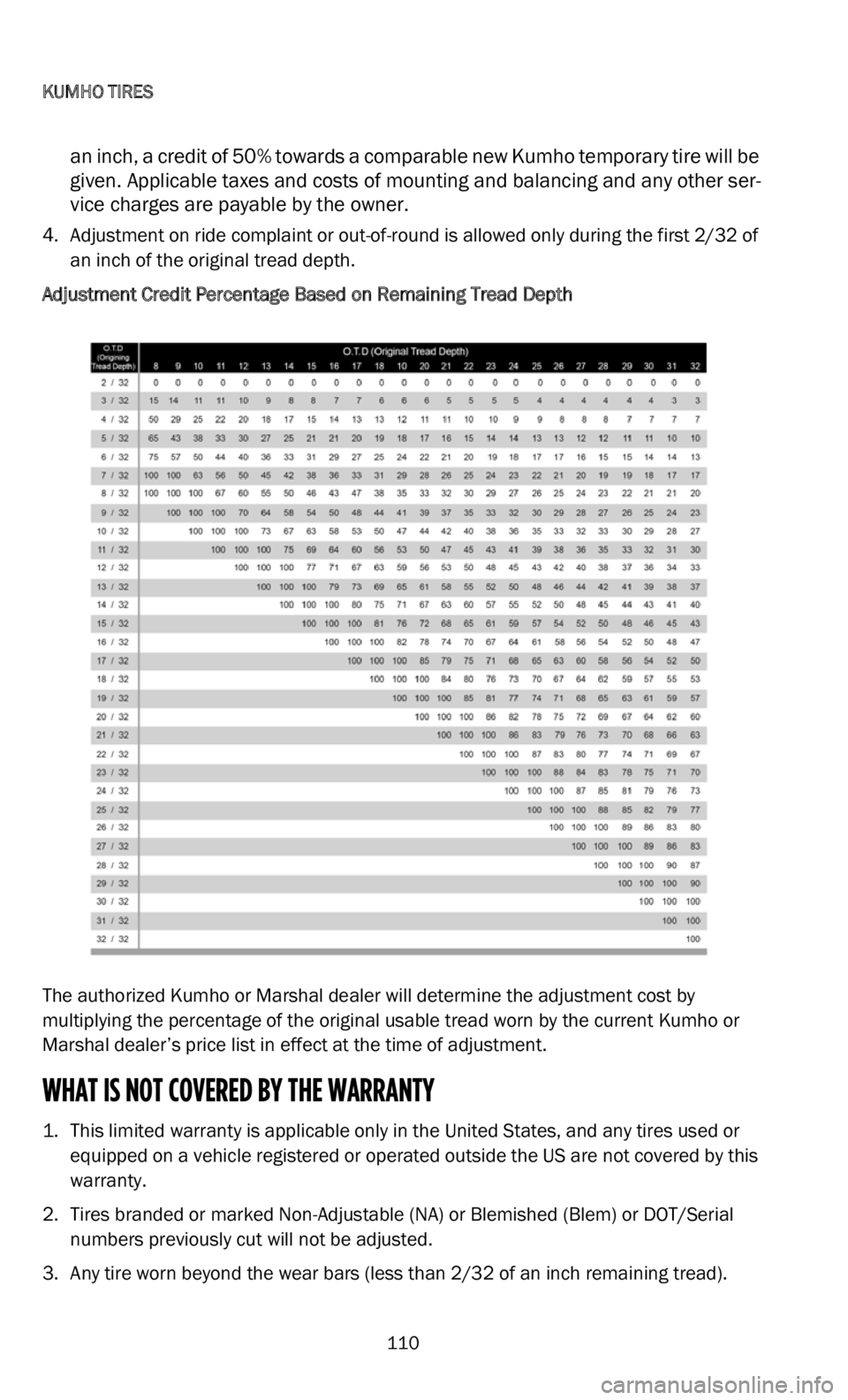tow bar DODGE DURANGO 2022 Vehicle Warranty
[x] Cancel search | Manufacturer: DODGE, Model Year: 2022, Model line: DURANGO, Model: DODGE DURANGO 2022Pages: 200, PDF Size: 6.72 MB
Page 29 of 200

BFGOODRICH® TIRES
28
All tires will wear out faster when subjected to high speeds as well as hard cornering,
rapid starts, sudden stops, frequent driving on roads which are in poor condition, and off
road use. Roads with holes and rocks or other objects can damage tires and cause
misalignment of your vehicle. When driving on such roads, drive carefully and slowly, and
before driving again at normal or highway speeds, examine your tires for any damage,
such as cuts, bulges, penetrations, unusual wear patterns, etc.
WEAR BARS
BFGoodrich® tires contain “Wear-Bars” in the grooves of the tire tread which show up
when only 2/32 of an inch (1.6 mm) of tread is remaining. At this stage, your tires must
b e
replaced. Tires worn beyond this stage are extremely dangerous.
DO NOT OVERLOAD - DRIVING ON ANY OVERLOADED TIRE IS DANGEROUS
The maximum load rating of your tires is molded on the tire sidewall. Do not exceed this
ra
ting. Follow the loading instructions of FCA US LLC and this will ensure that your tires
are not overloaded. Tires which are loaded beyond their maximum allowable loads for
the particular application will build up excessive heat that may result in sudden tire
destruction.
Do not exceed the Gross Axle Weight Rating (GAWR) for any axle on your vehicle.
TRAILER TOWING
If you anticipate towing a trailer, you should visit any BFGoodrich® tire retailer for advice
concerning the correct size tire and pressures. Tire size and pressures will depend upon
the type and size of trailer and hitch utilized, but in no case must the maximum cold
inflation pressure or tire load rating be exceeded. Check the tire decal and the Owner’s
Manual supplied by FCA US LLC for further recommendations on trailer towing.
WHEEL ALIGNMENT AND BALANCING ARE IMPORTANT FOR SAFETY AND MAXIMUM
MI
LEAGE FROM YOUR TIRES
CHECK HOW YOUR TIRES ARE WEARING AT LEAST ONCE EACH MONTH
If your tires are wearing unevenly, such as the inside shoulder of the tire wearing faster
th
an the rest of the tread, or if you detect excessive vibration, your vehicle may be out of
alignment or balance. These conditions not only shorten the life of your tires but
adversely affect the handling characteristics of your vehicle, which could be dangerous.
If you detect irregular wear or vibration, have your alignment and balance checked
immediately. Tires which have been run underinflated will show more wear on the
shoulders than in the center of the tread.
TIRE MIXING
BFGoodrich® tires are radial tires and for best performance it is recommended that the
same size and type of tire be used on all four wheel positions. Before mixing tires of
different types in any configuration on any vehicle, be sure to check the vehicle
manufacturer’s Owner‘s Manual for its recommendations.
Page 75 of 200

FALKEN TIRE CORPORATION 74
of these noted conditions are present during inspection, we recommend returning to
your servicing tire dealer to be corrected to ensure long tire life. ***Never include a
temporary spare tire in your rotation pattern***
TIRE REPLACEMENT
Falken recommends replacing your tires when the tread wears down to the wear bars at
1.6 mm (2/32 of an inch), which are located across the tread in several locations around
t h
e tire. If only two tires are being replaced, the two new tires should always be installed
on the rear of the vehicle to aid in preventing your vehicle from hydroplaning, even if your
car is front wheel drive. It is always recommended to have your new tires balanced during
installation, and alignment checked if the previous tires show and irregular wear. Tires
that have been in use for five years or more should continue to be inspected by a
qualified tire specialist, at least annually. It is recommended that any tires 10 years old
or older from the date of manufacture, including spare tires, be replaced with new tires
as a precaution even if such tires appear serviceable and even if they have not reached
the legal worn out limit at 1.6 mm (2/32 of an inch).
TIRE REPAIRS
In the event that you get a flat tire while driving, it is best to find a nearby, safe place to
stop and install your spare tire or call a tow truck. The less distance that you drive on your
low or flat tire, the better chances your tire has of being repairable. Once you are able to
get to your local servicing tire dealer, have them dismount the tire from the rim and
thoroughly inspect the inside of the tire. It is important to know the difference between a
proper tire repair and an improper one because it can be critical to you and your vehicle’s
safety. An improper repair could pose a safety threat to you and your family and could
also affect your tire’s manufacturer warranty. Here are some tips in determining if your
damaged tire can be properly repaired or not:
• Always have the tire removed from the wheel and inspected before any repair is
p
erformed.
• T ires with less than 1.6
mm (2/32 of an inch) of tread should NOT be repaired.
• N ever repair a tire with a puncture larger than 6
mm (1/4 of an inch).
• R epairs should be limited to the tread area only.
•
Repairs cannot overlap one another.
Page 111 of 200

KUMHO TIRES
110
an inch, a credit of 50% towards a comparable new Kumho temporary tire will be
given. Applicable taxes and costs of mounting and balancing and any other ser -
vice charges are payable by the owner.
4. Adjustment on ride complaint or out-of-round is allowed only during the first 2/32 of
an inch of the original tread depth.
Adjustment Credit Percentage Based on Remaining Tread Depth
The authorized Kumho or Marshal dealer will determine the adjustment cost by
m u
ltiplying the percentage of the original usable tread worn by the current Kumho or
Marshal dealer’s price list in effect at the time of adjustment.
WHAT IS NOT COVERED BY THE WARRANTY
1. This limited warranty is applicable only in the United States, and any tires used or equipped on a vehicle registered or operated outside the US are not covered by this
warranty.
2. T ires branded or marked Non-Adjustable (NA) or Blemished (Blem) or DOT/Serial
n
umbers previously cut will not be adjusted.
3. A ny tire worn beyond the wear bars (less than 2/32 of an inch remaining tread).
Page 132 of 200

MICHELIN®
131
misalignment of your vehicle. When driving on such roads, drive carefully and slowly, and
before driving again at normal or highway speeds, examine your tires for any damage,
such as cuts, bulges, penetrations, unusual wear patterns, etc.
WEAR-BARS
Michelin® tires contain “Wear-Bars” in the grooves of the tire tread which show up when
o n
ly 2/32 of an inch (1.6 mm) of tread is remaining. At this stage, your tires must be
r e
placed. Tires worn beyond this stage are extremely dangerous.
DO NOT OVERLOAD - DRIVING ON ANY OVERLOADED TIRE IS DANGEROUS
The maximum load rating of your tires is molded on the tire sidewall. Do not exceed this
rating. Follow the loading instructions of FCA US LLC for your vehicle and this will ensure
that your tires are not overloaded. Tires which are loaded beyond their maximum
allowable loads for the particular application will build up excessive heat that may result
in sudden tire destruction.
Do not exceed the gross axle weight rating for any axle on your vehicle.
TRAILER TOWING
If you anticipate towing a trailer, you should visit any Michelin® tire retailer for advice
c o
ncerning the correct size tire and pressures. Tire size and pressures will depend upon
the type and size of trailer and hitch utilized, but in no case must the maximum cold
inflation pressure or tire load rating be exceeded. Check the tire decal and the owner’s
manual supplied by FCA US LLC for your vehicle for further recommendations on trailer
towing.
MICHELIN® PAX® System Tires/Self-Supporting Zero Pressure (ZP) Tires and Trailer
T o
wing
Operation of Pax® or ZP tires at low or zero air pressure with a trailer in tow, is dangerous
a n
d is not recommended. If the low pressure warning indicator is activated when a trailer
is in tow, stop, disconnect the trailer, and do not continue to tow the trailer until the tire
has been repaired and re-inflated to the proper air pressure. If the tire cannot be
repaired, it must be replaced with a new full size, PAX®/ZP tire, and inflated to the proper
air pressure, before the trailer can be safely towed again.
WHEEL ALIGNMENT AND BALANCING ARE IMPORTANT FOR SAFETY AND MAXIMUM
M I
LEAGE FROM YOUR TIRES.
CHECK HOW YOUR TIRES ARE WEARING AT LEAST ONCE EACH MONTH
If your tires are wearing unevenly, such as the inside shoulder of the tire wearing faster
th
an the rest of the tread, or if you detect excessive vibration, your vehicle may be out of
alignment or balance. These conditions not only shorten the life of your tires but
adversely affect the handling characteristics of your vehicle, which could be dangerous.
If you detect irregular wear or vibration, have your alignment and balance checked
immediately. Tires which have been ran underinflated will show more wear on the
shoulders than in the center of the tread.